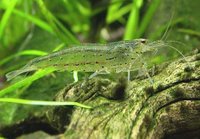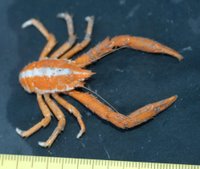Dear Blue Lobster:
I'm an American student moving to England to finish my degree and I plan on taking my crayfish with me. What do I need to know about caring for my cray in the UK? Is there anything I should be aware of?
Dear Gentle Sir:
First of all, if you're moving to England you should get used to the British spelling of lobstour, which is used to refer what Americans call crayfish or crawdads and is analogous to American English lobster.
In England, a lobstour's pincer and crusher claws are on reverse sides compared to an American cray's, which are thought to have crossed the Bering Land Bridge from Siberia some forty to fifty thousand years ago and are of different physical types than European crays. Today America and Europe are home to unique genera and species, though some American crays have made their way over the Atlantic to become pest species in the Old World.
Bringing your American cray to England can be quite a test. England only allows so many immigrant crays into the country, so a certain amount of smuggling may be involved. You should read up on how to properly ship a cray, and apply and international and local laws regarding your country of destination. Realize that the punishment for illegal immigration is usually detainment followed by deportation, for both the cray and its owner. Be careful!
When rearing a New World cray with aquarium hardware designed for Old World lobstours, one might want to take care to assure maximum comforts for the cray. You'll be using Celsius temperatures in England which are lethal to American crays. Be sure to bring an American heater that uses Farenheit units to warm the tank. Also beware of differences in units of measure, primarily between inches and centimeters. Tanks rated for centimeters might not take your cray, which grows in inches.
So what do you do if your cray has grown too large to house in cramped, claustrophobic Britain? The easiest answer is to release him in a local stream or pond, but pressure from animal rights extremists has made it illegal to release non-native species in British water tables. I would instead suggest placing the cray in a saltwater bath, allowing it to empty its bowels, and shipping it to a friend in a country that doesn't have prison time for returning a crayfish to nature.
Good luck, and I hope you and your cray avoid deportation!







